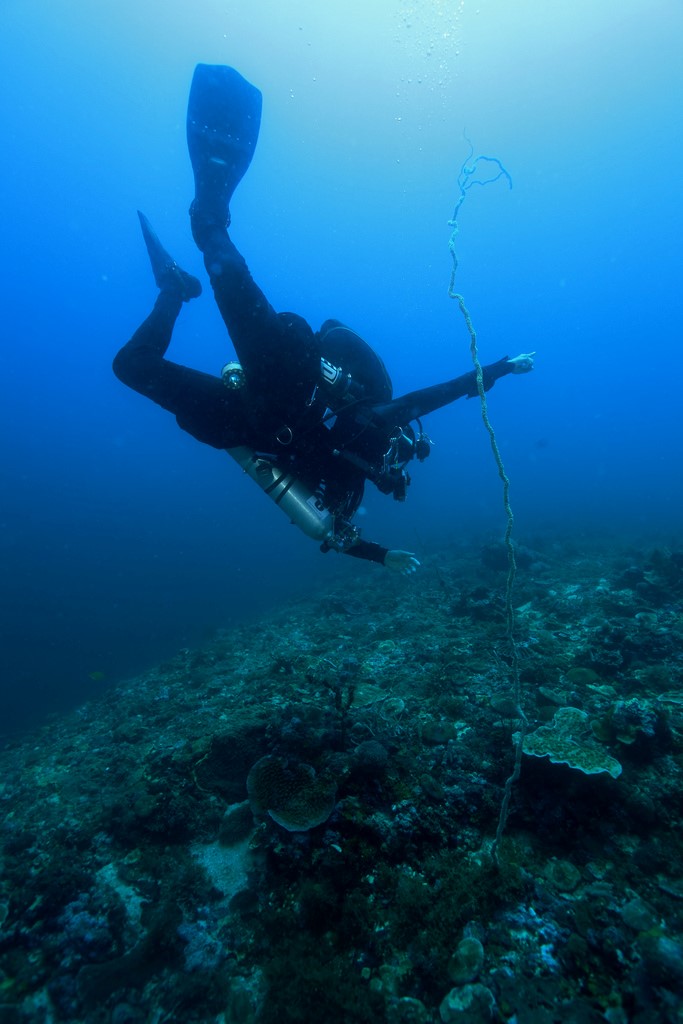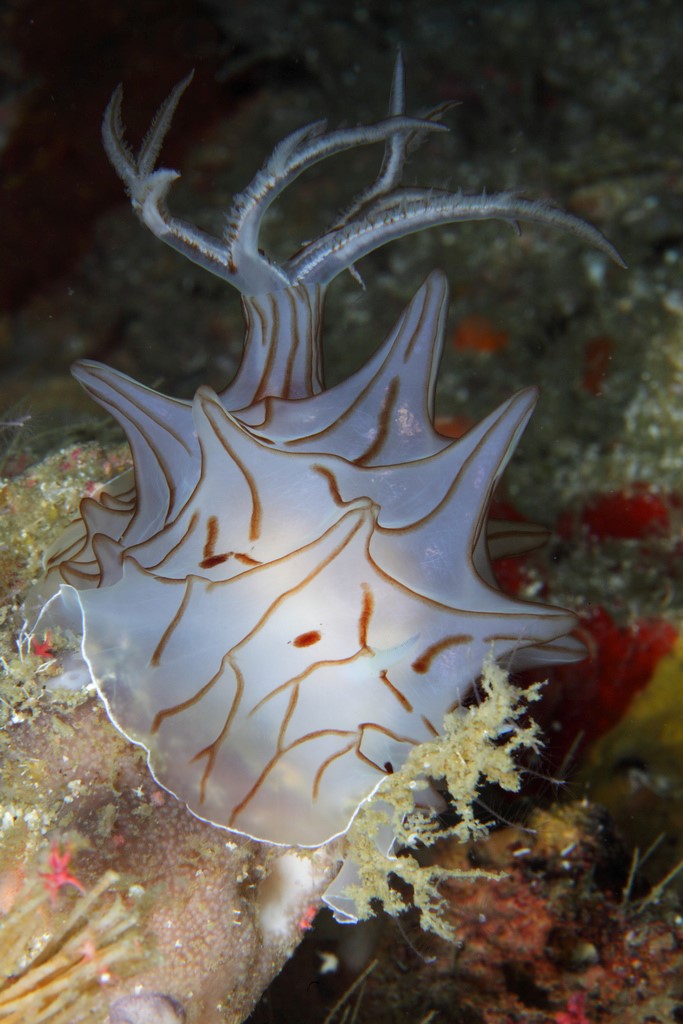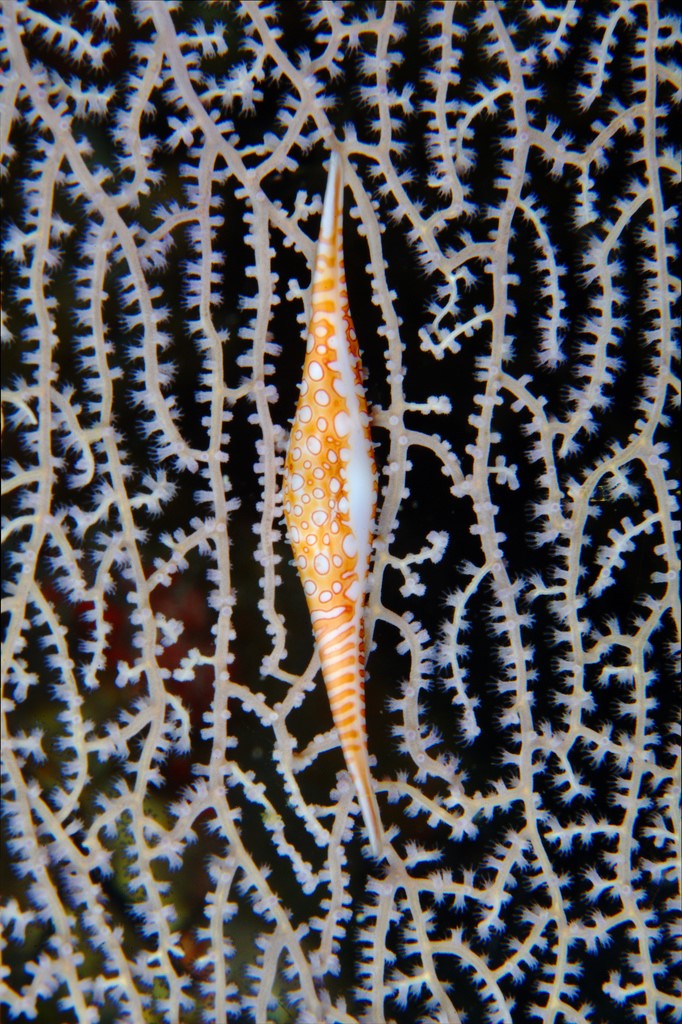By guest blogger Dr. Klaus M. Stiefel
A few months ago, scubadiverlife.com featured an article about the thresher sharks at Monad Shoal near Malapascua, Philippines. I couldn’t agree more that seeing these magnificent sharks is an awe-inspiring experience, but amazingly, there’s even more to see at Monad Shoal. I have spent some of the best hours of my underwater life gliding along the walls of Monad. Once you drop over the edge of the plateau, where the cleaner stations frequented by the thresher sharks are, an incredibly biodiverse reef wall will appear in front of your mask. I had the privilege of doing most of my technical diving training with Evolution in Malapascua, and many of our training dives were at Monad. A goby biodiversity survey led us to the wall many more times, down to depths of 262 feet (80m). But you can equally well explore Monad as a recreational diver; there is plenty to see between 65 feet (20m) on the edge of the plateau and the recreational limit of 130 feet (40m).

The current-rich wall is in a marine protected area within the Coral Triangle, so naturally, a multitude of soft coral species flourish here, in fan and tree-like growth forms to filter plankton out of the current. Some of these soft corals have grown so large that diver in full tech gear can easily hide behind them. The beauty of these corals is just astonishing. It’s lovely to appreciate them from a distance, but also from up-close: in between their branches live many cardinalfishes, gobies, damselfishes and invertebrates like skeleton shrimp and cowries. One on occasion we found an enormous population of skeleton shrimp in one huge, fine-branched white soft coral tree. What must have been several thousands of these crustaceans were munching away at the branches. Females were filled with eggs grown from the protein of the opulent meal. The coral had turned into a veritable shrimp city.

The Monad wall also features large crevices in its side, shielded from the currents and a bit darker than the rest of the wall. The conditions here are somewhat akin to those at greater, darker depths, and we once spotted a type of shrimp there that’s not supposed to live anywhere shallower than 650 feet (200 meters).
One another occasion, we found a nudibranch belonging to a yet unidentified species of Halgerda in one of these crevices. Listed as Halgerda sp.1 in a few ID books and webpages, the mollusk was only known to occur in New Caledonia, on the other planetary hemisphere, many thousands of miles away. Every single dive at Monad provides us with a new natural history surprise.

And of course, there are the thresher sharks. While they frequent the cleaner stations on the top of Monad mostly in the early morning, they retreat to the darker and deeper parts of the shoal during the day. Not on every dive, but occasionally we encounter them in the open water off the wall during day dives at depths below 100 feet (30m).
Even the ascent through blue water above Monad is anything but boring. Mobula rays, the smaller cousins of mantas, are regular visitors and parade in formation usually no deeper than 50 feet (15m). Vexingly, these rays maintain personal space of about 25 feet (8m), a distance they always keep between themselves and divers — just a tad too far for quality photographs. One on occasion, I saw a giant pelagic manta ray hover above the top of Monad Shoal, and on one absolutely unforgettable afternoon, my dive buddies and I were greeted by a school of juvenile tuna upon ascent.
On Monad I shot an image that ended up as a magazine cover and two more that were published in magazines, and a good part of a scientific study on goby biodiversity was conducted there. Monad feels special to me. Dive it, and the same might happen to you, too.

